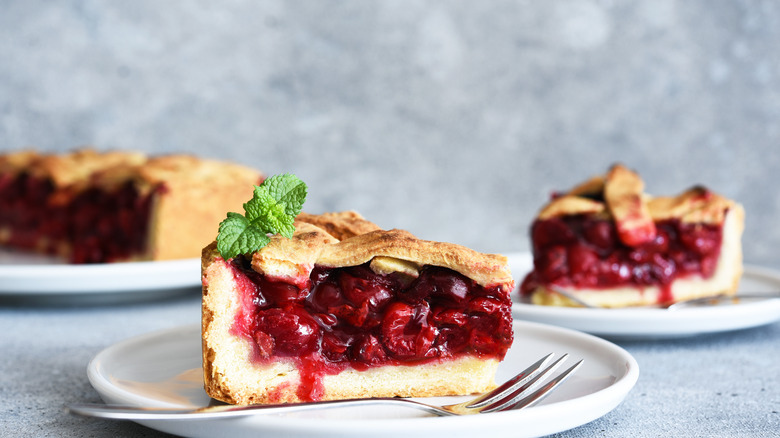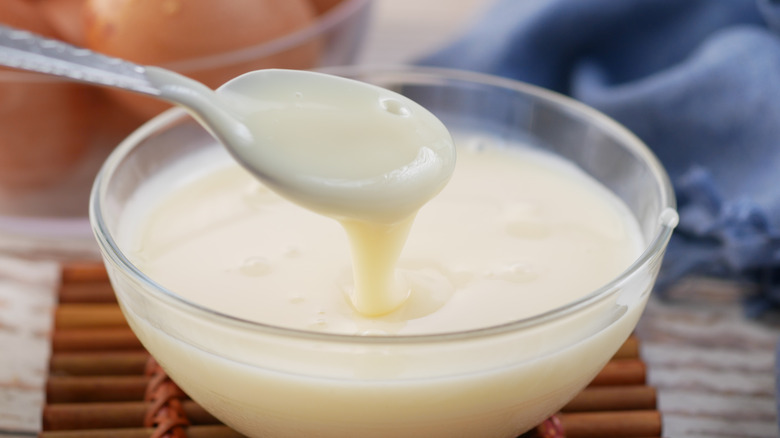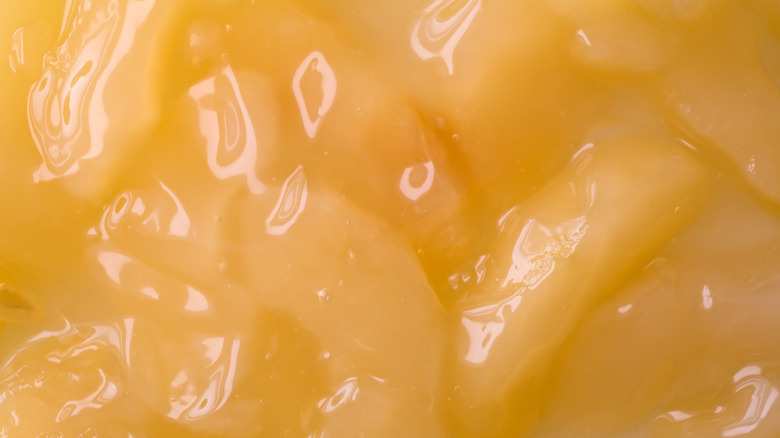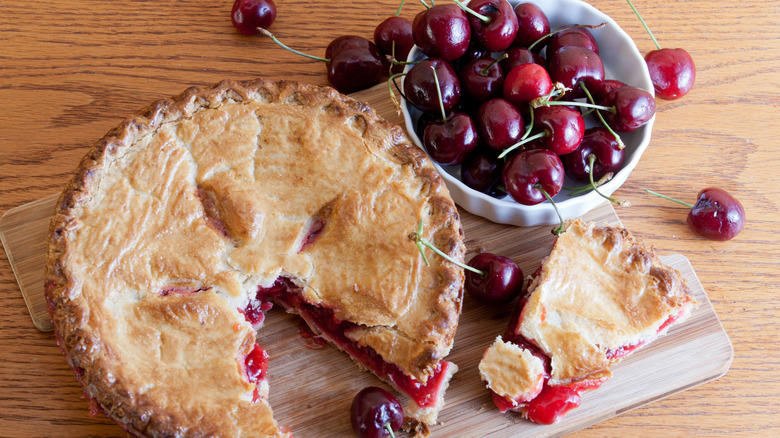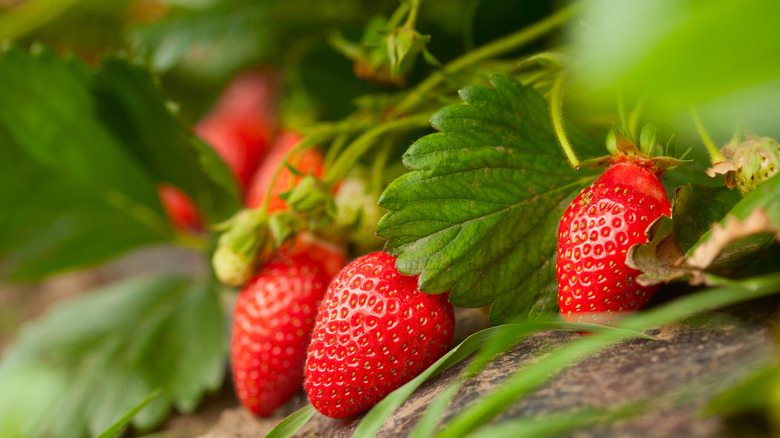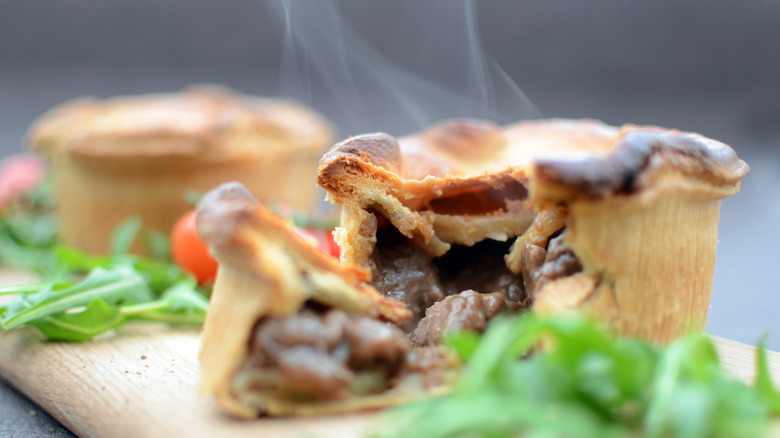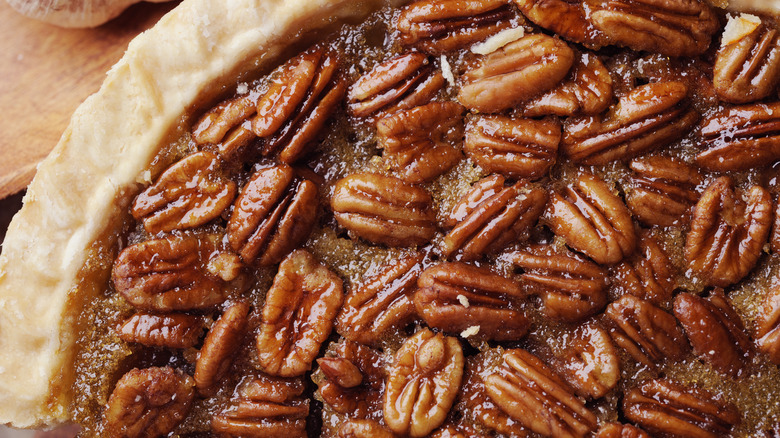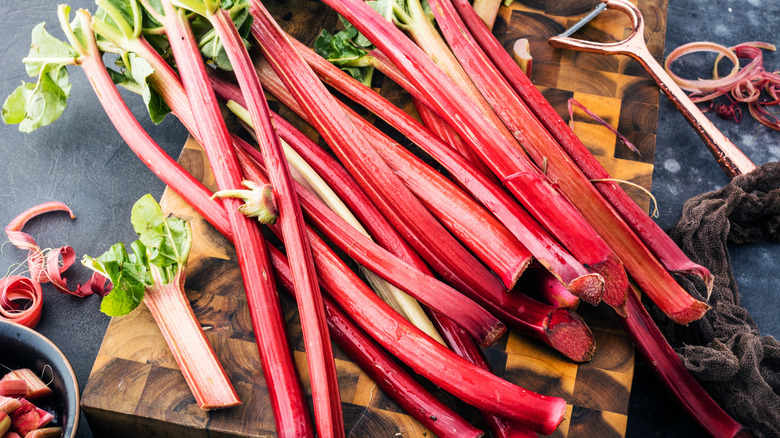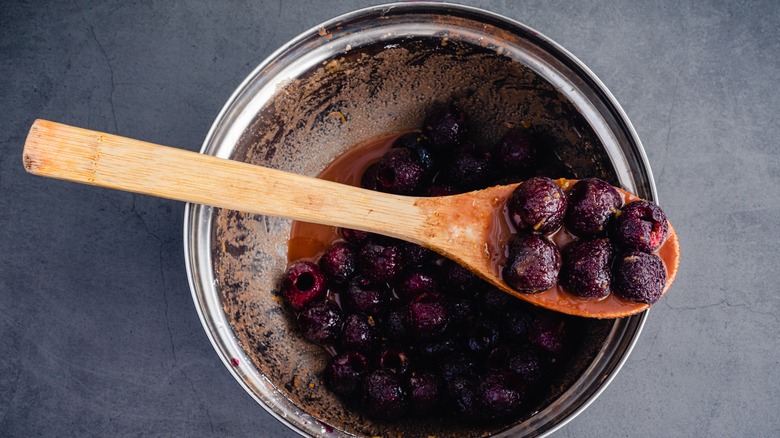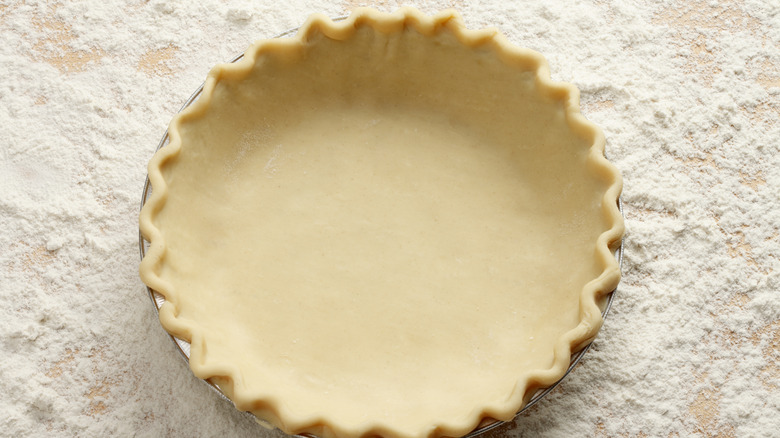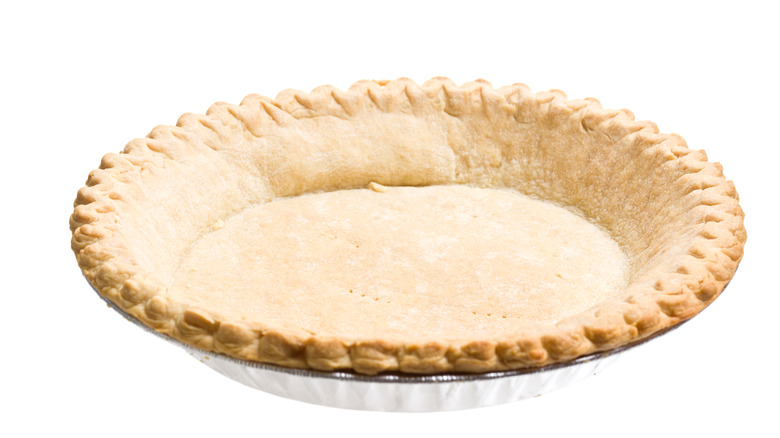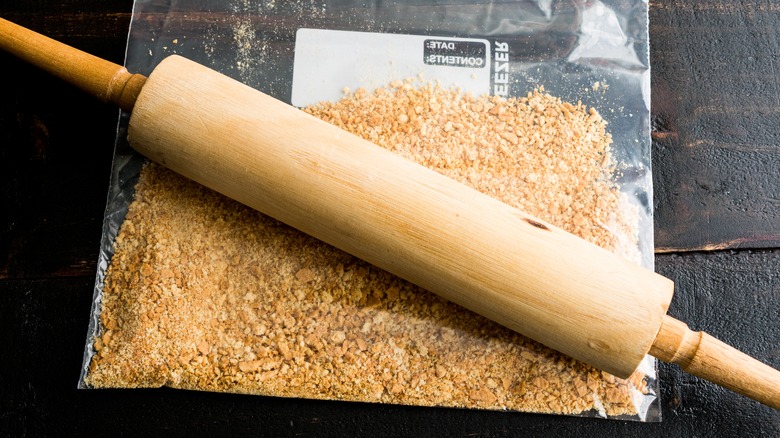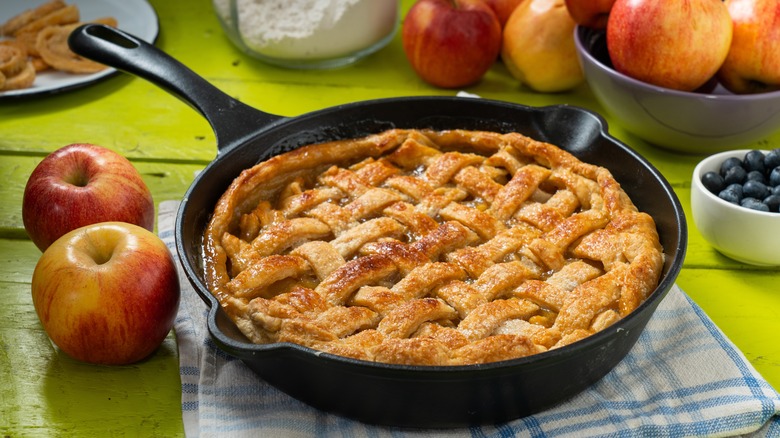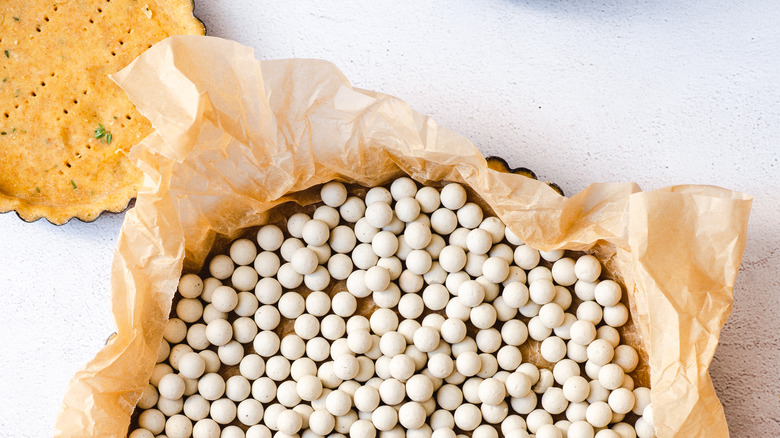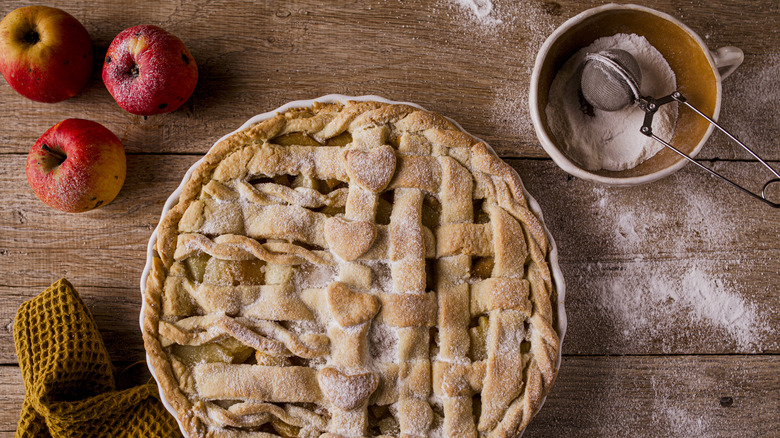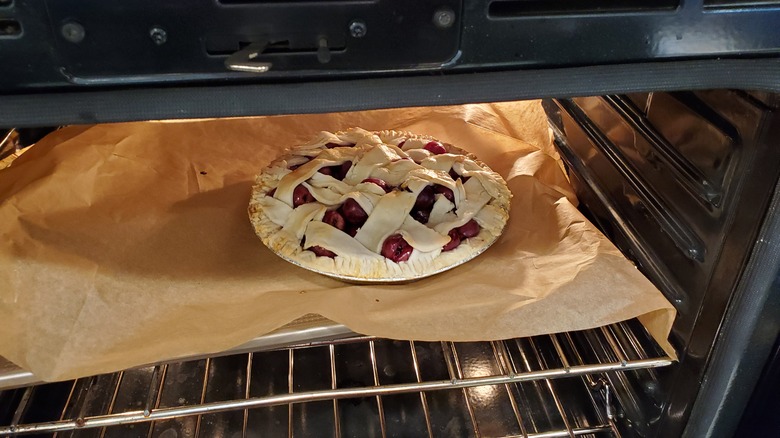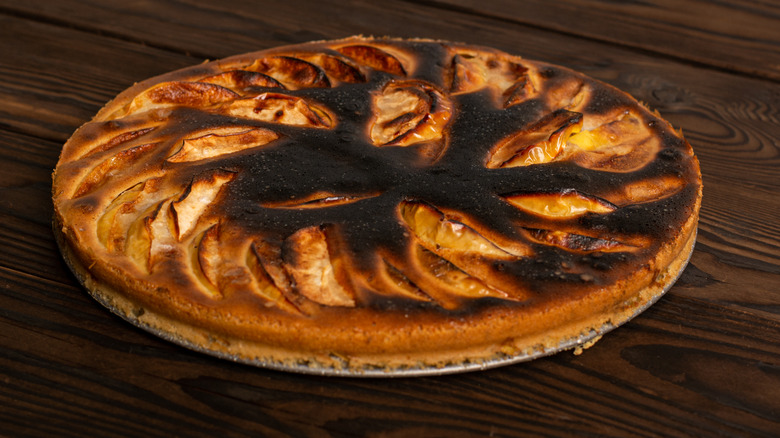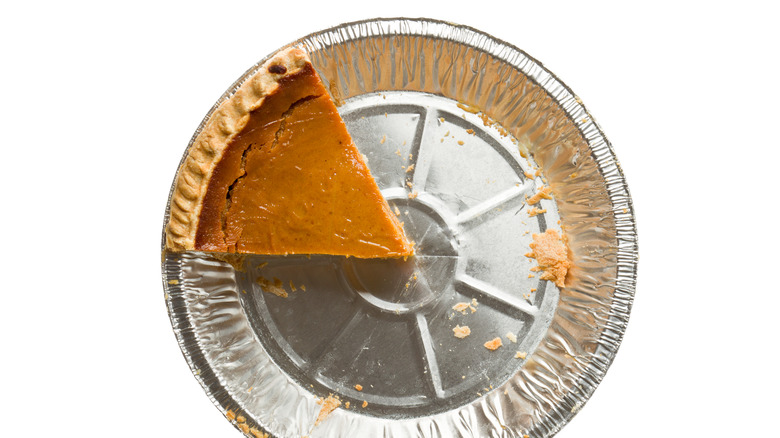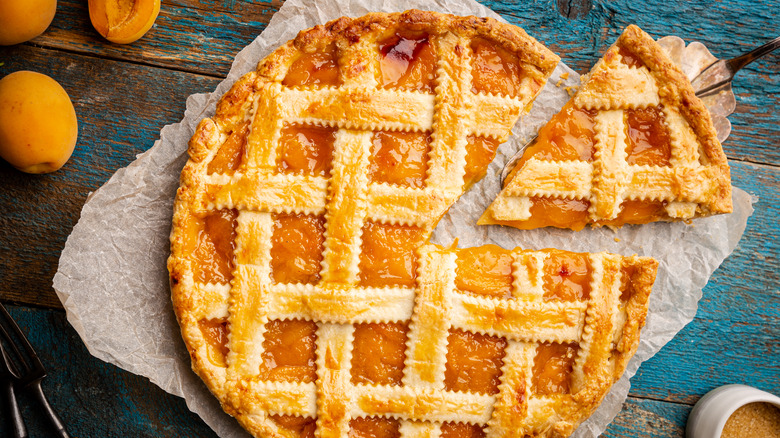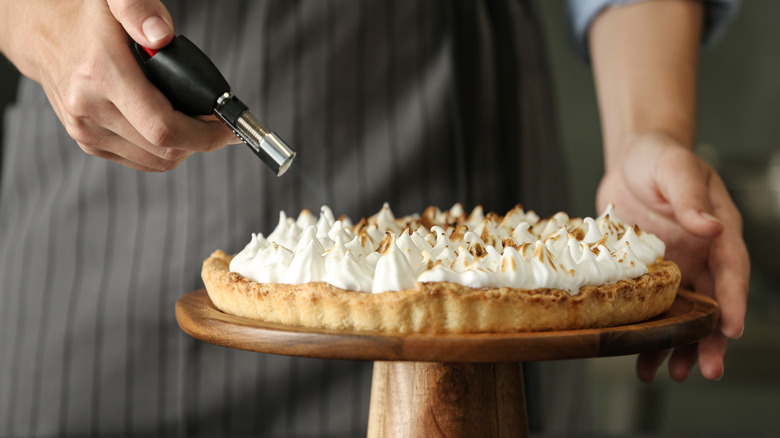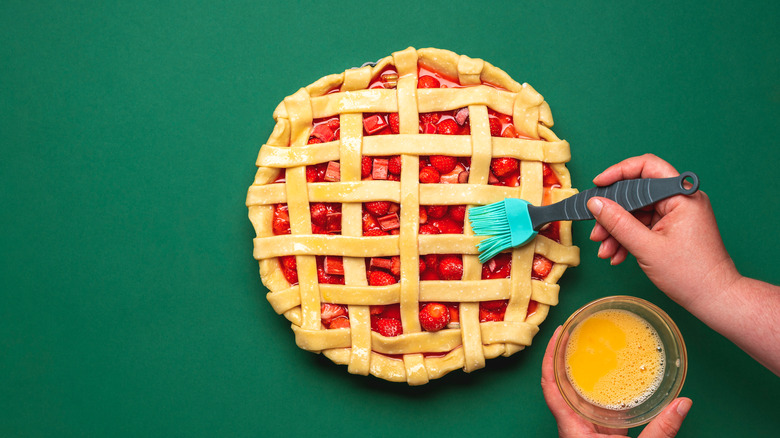20 Mistakes You're Making Baking Pies
Summer is the season for many things, including the beach, boating, and barbecues. But one thing that often gets missed in the repertoire of summer activities is baking pies. The warm weather brings a bounty of produce to farmers' markets, stores, and orchards, which is perfect for experimenting more in the kitchen. As the summer months start to wane, the colder pies (like pecan, pumpkin, and chicken pot pie) also begin to emerge, making baking pies a year-round culinary activity for bakers of all levels.
Unfortunately, some more popular pies, like apple and pumpkin, manage to overshadow other worthy recipes like strawberry rhubarb, peach, and lemon meringue. We're here to provide widely applicable pie-baking tips that can be used for both cream and fruit pies and for pies that use a crumb crust instead of a traditional shortcrust pastry. After all, we're of the mindset that there's no such thing as a bad slice.
Neglecting a creamy element in your fruit pies
There is often a very set dichotomy between fruit and cream pies. But why can't your favorite fruit pie have some elements of a creamy one, too?
The secret ingredient for creamy cherry pie filling is sweetened condensed milk. This dairy product, which can be found in the baking aisle at most major grocery stores, is made with sweetened evaporated milk. Although adding it to the pie filling will dilute some deep red color, making the filling super smooth and milky. You can majorly upgrade your apple pie by using melted ice cream to marinate your apples before adding the filling to the crust. It seems like dairy is the best-kept pie secret and one that you'll want to try for several different types of fruit pies.
Using canned pie filling
Canned pie filling: Is it easy? Yes. But does it always yield the best results when it comes to making pies? Not at all.
Canned filling almost always has a monotone flavor and a consistency akin to sugary baby food. Taking the extra time to craft your own pie filling will always yield a more flavorful and better-textured pie. The essential components of any fruit pie filling include the fruit, which is peeled and cut into small pieces to encourage an even cook time, sugar, lemon juice, and a thickener like flour, cornstarch, or tapioca. From there, you can get creative with adding zest, extracts, and seasonings to help elevate the flavor of your pie. We recommend tasting along the way to find out the right ratio of ingredients for your perfect pie.
Letting your fruit pie turn into mush
One of the reasons why we avoid canned pie fillings, besides that they are almost always way too sweet, is that the pie always comes out with a mushy texture. This is often because some canned fillings contain a sweet syrup that liquefies the contents. To counteract this effect, you should add more fruit to the canned pie filling. Adding fresh, frozen, or canned fruit can boost the texture of your filling. If you stick to adding more thickeners, like tapioca or flour, you could end up with a filling that resembles Jell-O.
Adding additional fruit to your filling also opens up the opportunity to mix and match flavors in your recipe. For example, if you're using blueberry pie filling, add frozen raspberries and blackberries to transform it into a triple-berry pie.
Not baking seasonally
The bounty of the summer months opens up many opportunities for buying seasonal produce to bake with. Everyone should have a fruit pie recipe in their back pocket to use leftover produce and make the most of the harvest. These berries and fruits are picked at the height of their flavor, which will translate into the quality of your recipe.
If you don't have access to fresh produce or are baking a pie a few weeks after peak picking season, you can always rely on frozen fruit to make your recipe. In some cases, it may even be preferable to fresh fruit. For example, you should stick with frozen cherries over fresh for pie because the fruit produces more juice earlier in the cooking process, resulting in a thicker filling. If you're baking with frozen fruit, take note of any changes to your cooking time and if you need to pre-thaw the fruit before using it.
Using the wrong type of crust for your pie
We can't talk about pies without also talking about the crust. It's quite literally the thing that holds your entire recipe together.
The type of pastry you use for your crust will depend on the structure your pie needs. Shortcrust pastry is the standard option for fruit pies; it combines fat like butter, lard, or suet with flour. Water is then slowly added to the crust to bring it together into a ball that can be rolled and shaped. If you're making a meat pie, you should consider using a hot water crust instead. This method combines water and fat on the stove before adding them to the crust. This pre-gelatinization step creates a sturdier crust that can retain shape when removed from the pan.
If you want to go rogue, you can make a crumb crust instead by combining crushed cookies with fat. This type of crust is more typical for "unbaked" pies (like quick cheesecake and peanut butter pie) or custard pies.
Forgetting to add a sugary twist to pecan pie
A pecan pie is the perfect pairing for the cold winter months. This notoriously sweet pie is ideal as it is, but one unexpected ingredient that will elevate it to a new level is Coca-Cola. Like other replacements for the corn syrup in pecan pie, Coca-Cola can be made into a sticky syrup by boiling it down on the stove.
Simply simmer 4 liters of the soda on the stovetop with ¼ cup of white sugar. Although this sugar can be omitted for a more subdued sweetness, it can help the beverage retain its flavor after being simmered down. Once reduced, add the soda syrup to your filling. It's the perfect recipe substitution when you forget to buy corn syrup at the store — plus, it adds a distinct caramel flavor to the filling.
Not branching out into other flavorful fillings
Pies are a blank canvas for other flavors and textures. Instead of just sticking to the same old pie recipe, branch off into different flavor elements and ingredients that can easily complement other flavors. For example, to elevate cherry pie filling, add a splash of pineapple juice for natural sweetness and a slightly acidic flavor. Canned pineapple has a sugary undertone that brings out caramel notes after it's finished cooking. Rhubarb is another popular ingredient for strawberry pies because it adds a unique funky flavor without corrupting the sweetness of the berries.
You can also get adventurous and pull in flavors from other domains. Ancho chili powder is the ingredient that will change your pecan pie forever. Its smoky, sublime heat will provide depth to the sweet filling without making it a savory pie.
Forgetting to add a thickener to your pie filling
Forgetting to add a pie thickener is one of the most common mistakes you're making with pie baking. The purpose of the thickener is to soak up all of the residual moisture in the filling — which prevents the dreaded soggy bottom crust. The amount of thickener you'll need to add to your pie crust depends on the type you use. Flour, for example, contains less starch than tapioca starch or cornstarch, so you'll need to add a bit more to your filling to absorb the liquid effectively.
You'll also need to note how the thickener interacts with other ingredients. If you go with the tapioca starch, you'll need to let the filling rest for 15 minutes before adding it to the pie crust to allow it to soften. ClearJel is a modified cornstarch ideal for pies you intend to freeze.
Making a plain pie crust
Shortcrust pastry makes up the lion's share of pie crusts. A poorly made, bland pie crust doesn't do the filling any favors, so we recommend finding the perfect crust recipe that will make your dessert shine. One unique way we improve the flavor of our crust is by making a simple swap with the all-purpose flour. You should try a blend of flours for the pie crust because you can alter the flavor and texture of the shell. For example, if you're looking for a crust with a very soft bite and better flake, try mixing all-purpose wheat flour with low-gluten pastry flour.
One of our favorite swaps to make a pie more rustic is to use whole wheat flour instead of all-purpose. This works particularly well for blueberry pies, galettes, and apple pies because the crust has a mild, nutty flavor.
Not elevating that store-bought crust
We'll never bad-mouth someone for using store-bought pie crust over homemade. It's so easy to just pop the crust out of the freezer and into the oven — which means you can dedicate more of your attention to making the perfect filling. But no matter how you shape it, pre-made pie crust can sometimes be bland.
The simplest way to elevate store-bought pie crust is to combine it with another store-bought ingredient: shortbread cookies. Add these buttery cookies to a food processor to break them into small pieces before pressing them into the raw dough. The moisture in the cookies helps the crust stay pliable, and the butter in the cookies will also melt into the dough and infuse it with more flavor. Alternatively, you can add your favorite complementary spices or an extra sprinkle of sugar to your crust before baking.
Only using graham crackers for your crumb crust
Crumb crust has the potential to elevate a pie, but it can also be the downfall of the dish if it comes out dry, crumbly, and dull. If you want to ensure your crumb crust is the talk of the town, try swapping out the standard graham cracker base for another dry, crumbly cookie. The best cookies for flavorful crumb crusts include vanilla wafer cookies as a base for a banana cream pie, Thin Mints for a chocolatey pie, and cinnamon-y Biscoff cookies for everything in between.
The key to getting creative with a crumb crust is to refrain from soft, chewy cookies because they won't hold up when baked. You can also press the crumb crust into the pan with an aluminum pie plate to help get the perfect shape and ensure your crust stays compact.
Only using a standard pie tin
The standard pie-baking vessel is likely the same one your great-grandmother had. But what if we told you the key to unlocking a delicious dessert was baking it in something other than a pie plate?
A cast iron skillet can help you make better pies because it retains heat much more effectively, which produces a perfectly browned crust. The heat capacity also helps melt the moisture in the dough quicker than a standard pie plate, contributing to a flakier crust. Another tool that works well for baking pies is the Swiss Army knife of pans: the Dutch oven. It's the cooking vessel you should use for a perfectly crispy pot pie crust because the high sides give the pie structure. Plus, if you're baking it with just the top layer, you can make the recipe a one-pot dinner.
Not opting to blind-bake or par-bake some pie crusts
Blind-baking and par-baking are two baking techniques used for pies with different baking times for the crust and the filling. The significant difference between blind-baking and par-baking is that the former is used for pies with unbaked filling, like an easy cheesecake or peanut butter pie, while the latter is used for pies where the extra crust browning time is valuable, such as with a pecan pie.
To ensure your crust reaches the ideal shape and texture, you must poke steam holes ("docking") before placing it in the oven. You should also use weights to help the crust keep its shape as it bakes. Be sure to read the recipe before starting to plan for this step.
Not dusting your pies before adding the filling
The soggy bottom is a persistent threat for pie bakers everywhere. Our trick to avoid this common baking phenomenon is to add this magic dust that will soak up any residual juice in your pie filling: a 50-50 mixture of granulated white sugar and all-purpose flour.
For a standard pie crust, you'll need about 2 tablespoons of crust dust. Be sure to sprinkle it liberally on the raw pie dough; you don't want any uncovered spots poking through. Then, spoon your filling in and bake — you won't have to worry about the integrity of your bottom crust any longer.
Rushing through the baking process
Once you've gotten to the baking step, you don't want to throw it all away by making a small blunder. You shouldn't rush baking pie because it's more difficult to tell if it's finished baking compared to cookies and towering sponge cakes. You can't look for rising or flattening — and sometimes, the color of your crust can be deceptive. Instead, you'll need to use your recipe to determine the perfect baking time and temperature for your dessert.
There are some simple tips that will help you ensure your pie bakes evenly, like baking it on a preheated pizza stone or placing the pie on the bottom oven rack to promote the bottom crust to brown. You also might consider pre-baking your filling if you're working with an apple pie to ensure no part of the pie is raw while another is overcooked.
Neglecting to shield your crust from burning
One of the most common baking issues people encounter with pies is that the edge of the crust burns before the bottom (or filling) can adequately bake. You can prevent burnt pie crust by using aluminum foil to make a shield. This method is more foolproof than layering a couple of foil strips against the tin because it will stay attached to the tin and not fall off.
Start by cutting off a piece of tin foil the size of your pie and folding it twice into a small square. From there, cut two curves with about three inches in between. This will leave a circular shield about 3 inches in width. Crimp the shield against the outside of your pastry and only remove it for the last 20 minutes of baking. You can also wait to use it until after the edges of the pie have started to brown.
Incorrectly storing your pie
Like all leftover baked goods, figuring out how to store a pie can be tricky. Fruit and custard pies can be stored at room temperature for up to two days before the crust starts to get soggy. To slow this process, try wrapping it in plastic wrap, foil, or covered tin. You can extend the storage life of these pies by wrapping them well and freezing them for up to two months. When you're ready to eat, place the slice, wrapped in foil, in the oven to crisp up the crust.
Fruit, custard, and cream pies can all be refrigerated for up to five days, but condensation is the enemy of a perfectly flaky crust. Therefore, these pies are really only good up to day two. Savory meat and cream pies must be refrigerated because they are made with highly perishable ingredients.
Slicing your pie prematurely
The pie may look and smell delicious. But you need to refrain from taking a "tester slice" too prematurely. Otherwise, you risk the filling cascading out and soaking your crust.
One tip you need for baking pies is to always wait the recommended amount of time before slicing. For example, pumpkin pie needs to set for upwards of two hours before it can be sliced. Pecan pie takes significantly longer to set at around three hours since it has sugary syrup that needs to harden into place. You'll also be surprised to hear that fruit pies ideally should sit for about four hours before you slice into them. This large time window will allow the thickeners to help keep your filling in check.
Not adding sanding sugar before torching a meringue pie
A perfectly torched meringue can make your dessert much more visually appealing. To give your meringue a crunchy finish, add a sprinkle of sanding sugar to the outside of your peaks. Unlike standard granulated sugar, sanding sugar is highly resistant to heat, doesn't dissolve, and is much crunchier. When the sanding sugar meets a propane torch, the meringues will turn a stunning brown color with a distinct crunchy texture contrasting creamy lemon or key lime curd.
The key to torching your meringue is to move it in a circular pattern and avoid concentrating on one spot to prevent burning. You can also brown your meringues under the broiler for about 30 seconds — any longer, and it will burn.
Skipping the wash
If you want your pie to have a bakery-ready glow, you should consider using a wash. It's essential to pick the suitable wash for your pie crust because each has a different purpose. If you're striving for a golden brown flake on the top of your pie crust, stick to using eggs — or even better, just the yolks. If you want a shiny crust, consider adding a splash of milk or heavy cream to the top of your dessert. If you're looking for a vegan option, use a brush of almond milk or fatty coconut milk for the perfect color.
Egg wash isn't just for the tops of pies, either. You can also use it to prevent a soggy bottom crust in chicken pot pie by adding a swipe before your filling.
